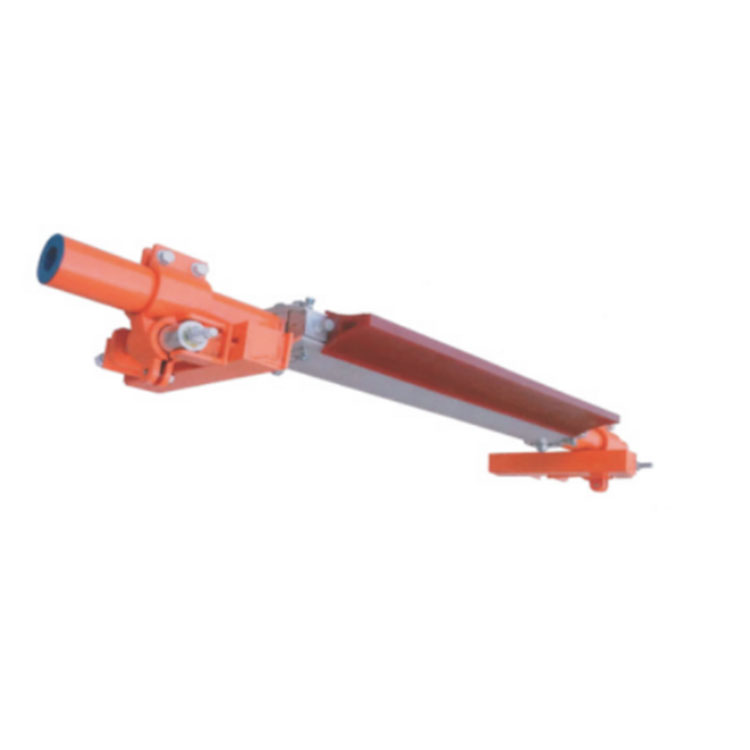Components of Conveyor Belt Cleaners
2024-06-12
A conveyor belt cleaner is an essential component of conveyor systems used in various industries such as mining, manufacturing, food processing, and logistics. It is designed to remove excess material buildup, debris, and contaminants from conveyor belts to ensure efficient and reliable operation. Here's an overview of conveyor belt cleaners:
Functions of Conveyor Belt Cleaners
1. Material Removal:
- Removes carryback, spillage, and buildup of materials such as coal, ore, aggregate, grains, and bulk solids from the surface of conveyor belts.
2. Prevents Contamination:
- Helps to prevent cross-contamination between different materials being transported on the conveyor belt, ensuring product integrity and quality in industries such as food processing and pharmaceuticals.
3. Maintains Belt Performance:
- Prevents material buildup and debris accumulation on the belt, which can lead to belt tracking issues, increased friction, and premature wear and tear.
4. Reduces Downtime:
- Regular cleaning of conveyor belts helps to minimize downtime associated with belt maintenance, repairs, and replacements, thereby maximizing production efficiency and uptime.
Types of Conveyor Belt Cleaners
1. Primary Cleaners:
- Positioned at the head pulley or the discharge end of the conveyor, primary cleaners are designed to remove the bulk of the material adhering to the belt surface.
2. Secondary Cleaners:
- Located further downstream from the primary cleaners, secondary cleaners provide additional cleaning and polishing of the belt surface to ensure thorough removal of residual material.
3. Tertiary Cleaners:
- Positioned near the tail pulley, tertiary cleaners are used to provide a final cleaning pass and to prevent material carryback from accumulating in the return strand of the conveyor belt.
4. Specialty Cleaners:
- Designed for specific applications or challenging environments, such as high-temperature, corrosive, or abrasive conditions, specialty cleaners may incorporate unique features or materials to address particular cleaning requirements.
Components of Conveyor Belt Cleaners
1. Cleaning Element:
- The cleaning element comes into direct contact with the conveyor belt surface and is responsible for removing material buildup. Common cleaning elements include brushes, scrapers, blades, and wipers.
2. Mounting Bracket:
- The mounting bracket provides support and attachment for the cleaning element, allowing for easy installation and adjustment on the conveyor frame.
3. Tensioning Mechanism:
- Some conveyor belt cleaners feature a tensioning mechanism to maintain proper contact pressure between the cleaning element and the belt surface, optimizing cleaning performance and extending the life of the cleaner.
4. Blade or Brush Material:
- Blades or brushes may be made from various materials depending on the application requirements, such as polyurethane, rubber, stainless steel, or nylon.
Considerations for Selection and Maintenance
1. Conveyor Belt Type and Material:
- Select a cleaner that is compatible with the belt material and design to ensure effective cleaning without causing damage or excessive wear.
2. Operating Conditions:
- Consider factors such as belt speed, material characteristics, temperature, humidity, and environmental conditions when choosing a conveyor belt cleaner.
3. Installation and Adjustment:
- Proper installation, alignment, and adjustment of conveyor belt cleaners are essential for optimal cleaning performance and extended service life.
4. Regular Inspection and Maintenance:
- Conduct routine inspections and maintenance checks to ensure that conveyor belt cleaners are functioning correctly and to address any issues promptly, such as worn blades or damaged cleaning elements.
Conclusion
Conveyor belt cleaners play a crucial role in maintaining the efficiency, reliability, and safety of conveyor systems by removing material buildup and contaminants from the belt surface. By selecting the appropriate type of cleaner and ensuring proper installation, adjustment, and maintenance, industries can optimize conveyor performance, minimize downtime, and enhance overall productivity.



